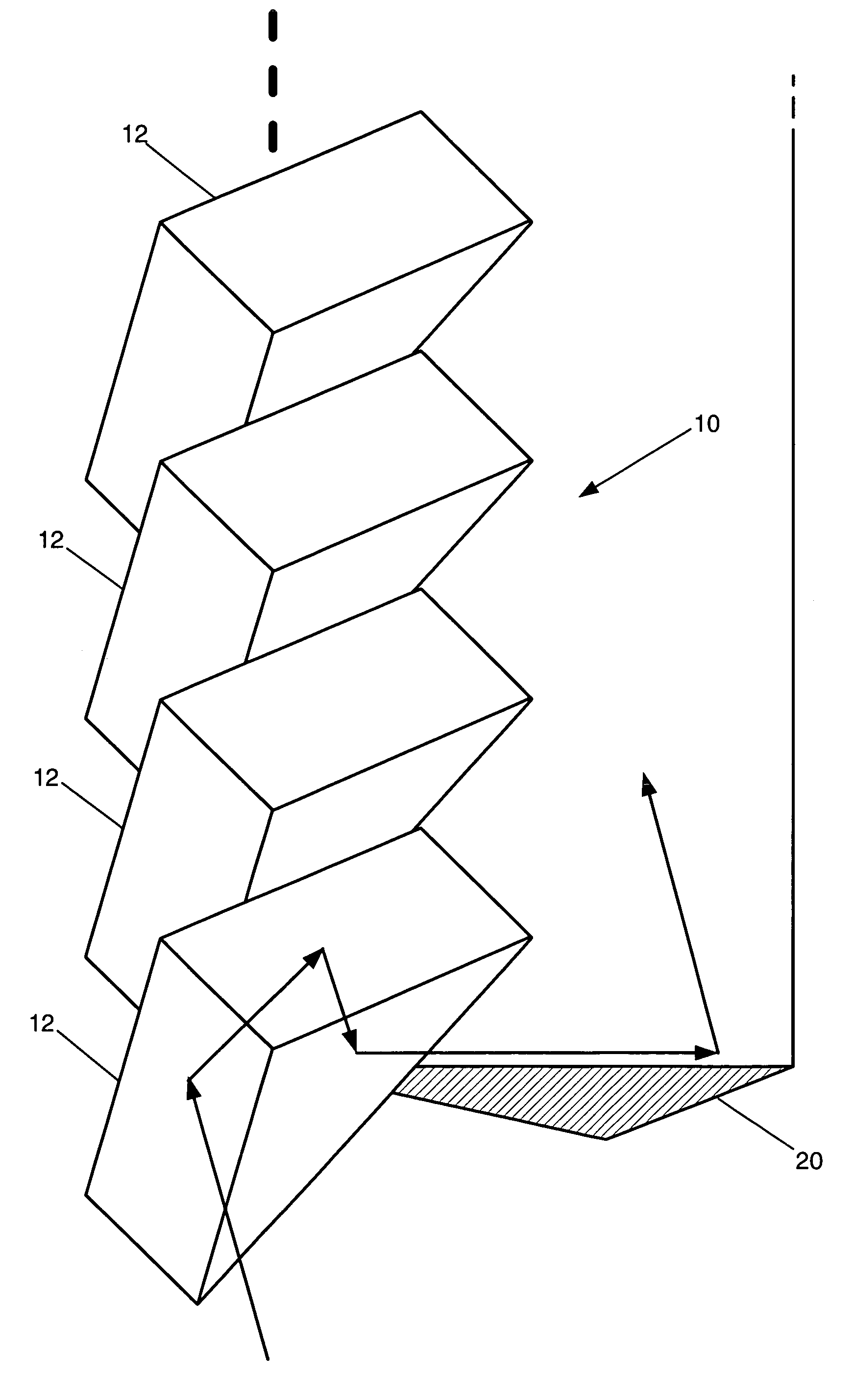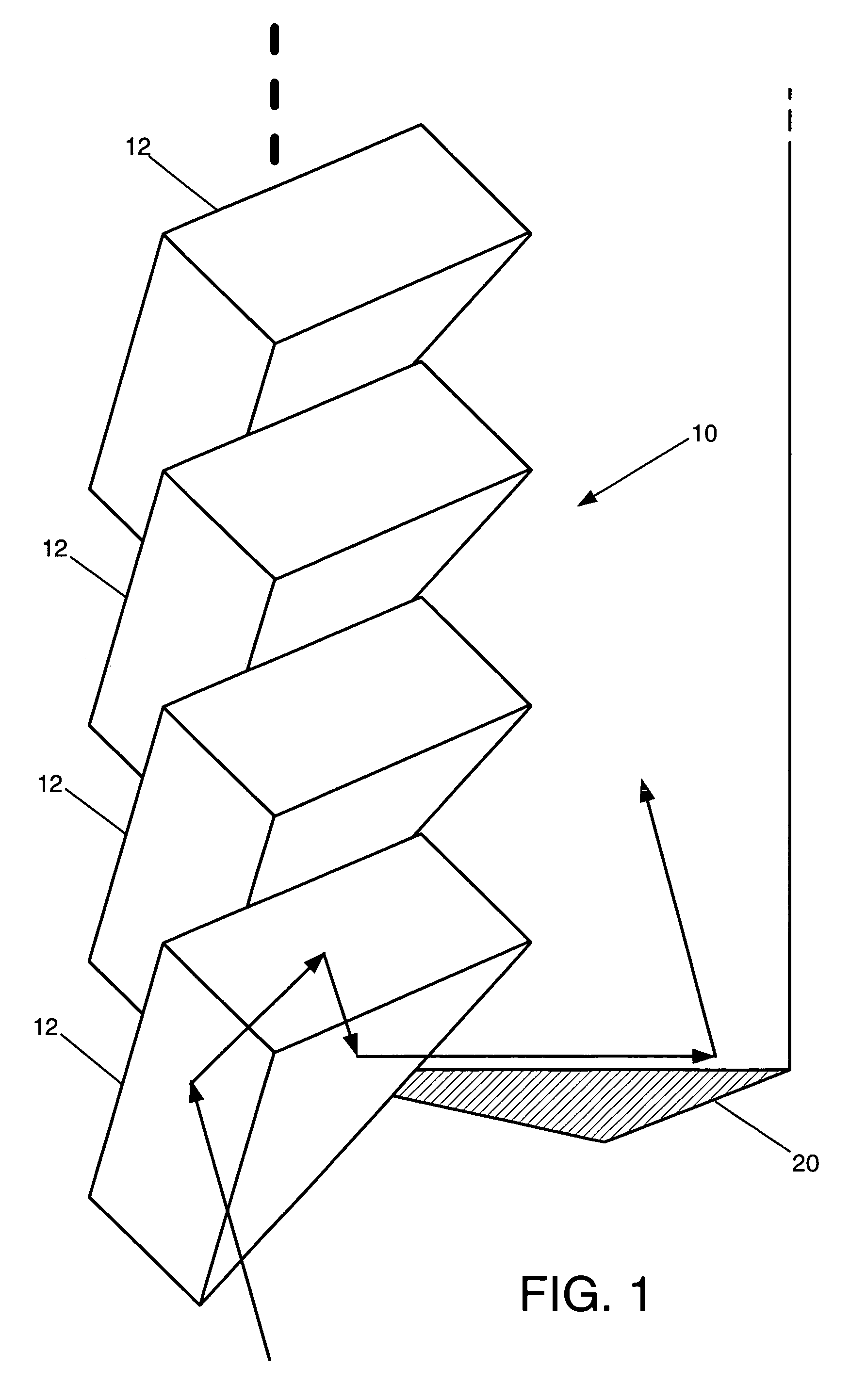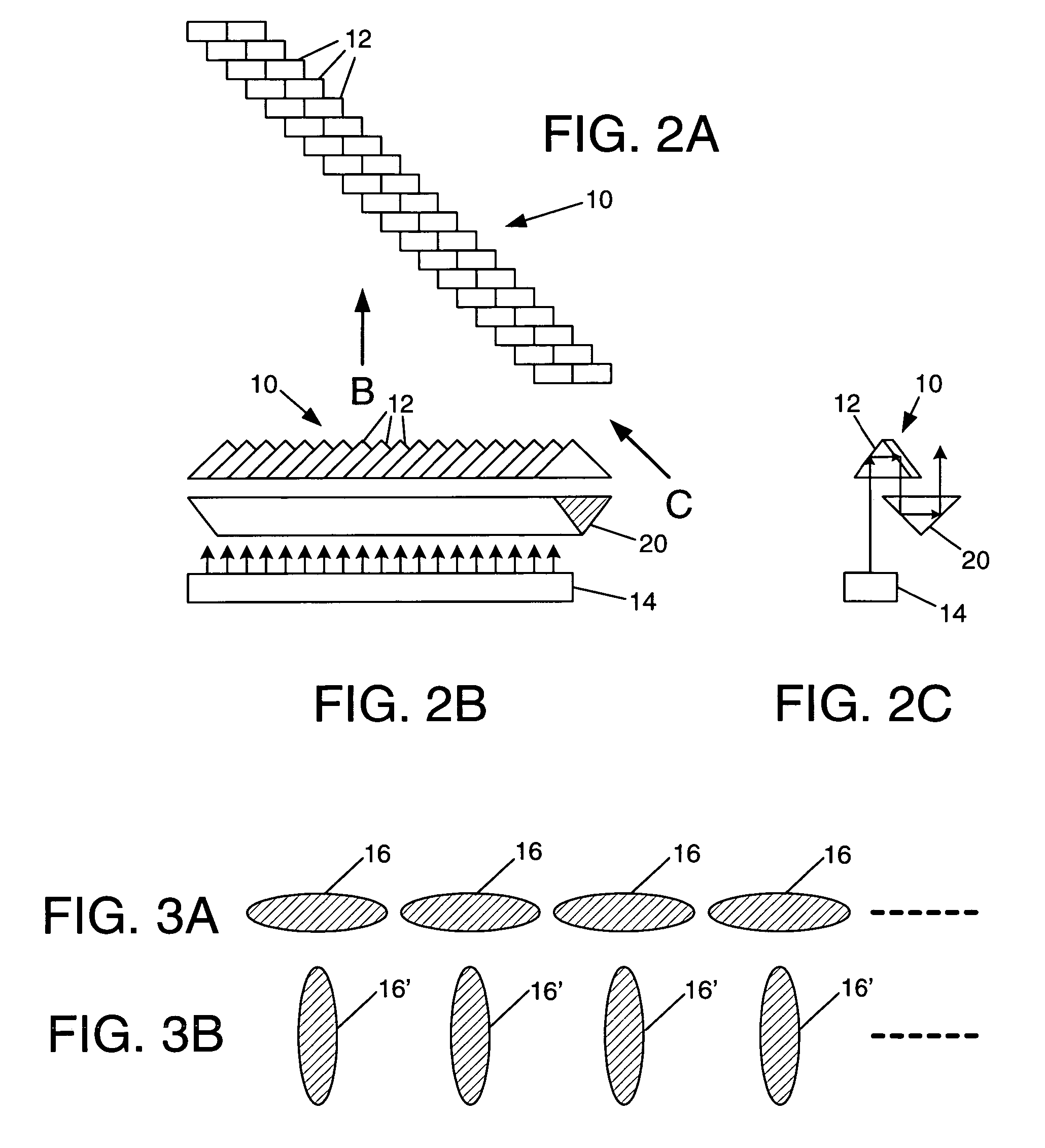Laser diode bar beam reformatting prism array
a technology of laser diodes and prism arrays, applied in the field of high-power laser diodes arrays, can solve the problems of high energy loss, asymmetrical properties, high undesirable asymmetry, etc., and achieve the effects of avoiding interference, facilitating collimation of arrays and launching, and more symmetric properties
- Summary
- Abstract
- Description
- Claims
- Application Information
AI Technical Summary
Benefits of technology
Problems solved by technology
Method used
Image
Examples
Embodiment Construction
[0017]As shown in the drawings for purposes of illustration, the present invention pertains to a technique for reshaping or reformatting an output beam from a laser diode bar array of the type that may be used in high power applications, such as for pumping a fiber laser. A well known difficulty associated with laser diode bar arrays of wide stripe emitters is that the resultant output beam is elliptical in cross section and diverges differently in the transverse and lateral directions. The output beam is said to exhibit anamorphism, as often defined by the beam invariant, which is the product of the near field diameter (in millimeters) and the far field diameter (in milliradians). Ideally, the beam invariant in the transverse and lateral directions should be roughly the same, meaning that the beam exhibits low astigmatism and a high degree of circularity of cross section. In this context, the “lateral” direction extends across the emitter array, parallel to the linear array of emit...
PUM
 Login to View More
Login to View More Abstract
Description
Claims
Application Information
 Login to View More
Login to View More - R&D
- Intellectual Property
- Life Sciences
- Materials
- Tech Scout
- Unparalleled Data Quality
- Higher Quality Content
- 60% Fewer Hallucinations
Browse by: Latest US Patents, China's latest patents, Technical Efficacy Thesaurus, Application Domain, Technology Topic, Popular Technical Reports.
© 2025 PatSnap. All rights reserved.Legal|Privacy policy|Modern Slavery Act Transparency Statement|Sitemap|About US| Contact US: help@patsnap.com



